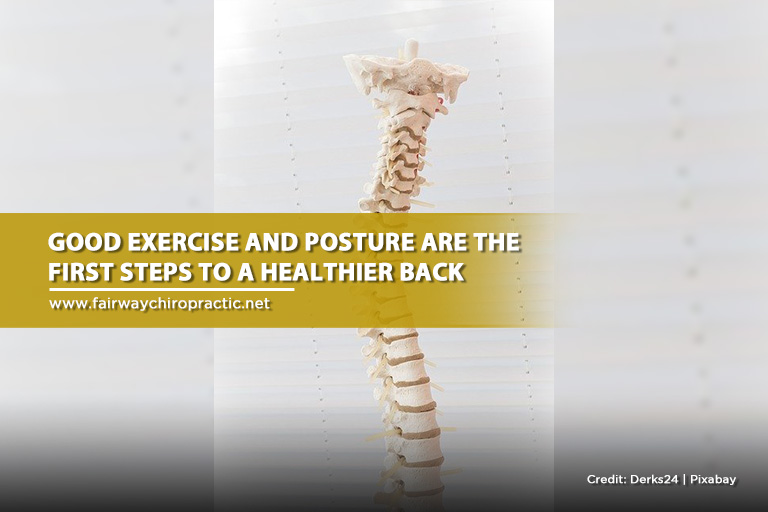Back pain is one of the most common ailments among many adults. For many, aches and pains when standing are a depressingly commonplace occurrence, but there are things you can do about it. The usual approach for many sufferers is to rest and wait for the pain to go away. However, many doctors advise patients to get active and move the affected muscles as a more effective pain relief treatment.

While exercise helps relieve the pain and strengthen your back muscles, it’s crucial to use exercises that actually help your back. Some movements are better for developing the muscles in your back than others. The right exercises should stimulate the affected muscles without putting them under undue strain. To help you give your back muscles a proper workout, check out this list of simple exercises for a healthy spine to keep your back in tip-top condition.
1. Bridging
Bridging is one exercise routine that offers plenty of relief for back pain. This exercise helps strengthen many of the muscles that contribute to back pain, like the lower back, hamstrings, and glutes. The gluteus maximus is one of the most important muscles in the body, and keeping it healthy goes a long way toward supporting the spine and offering some pain relief from back pain
To bridge properly, lie on the ground and bend your knees, keeping your feet flat on the floor and hip-length apart. Press your feet into the floor and raise your hips until your shoulders, hips, and knees form a straight line. Squeeze your buttocks and hold that position for about 6 seconds. Slowly bring your hips back to the floor and rest for about 10 seconds. Repeat your bridges 8 to 12 times.
For additional safety, avoid arching your lower back while your hips are moving upward. Another thing to avoid is overarching. To prevent that, keep your abdomen tight before and during your lift to keep your body straight.

2. Wall Sits
Wall sits are a great way to give yourself a change of pace from sitting down normally.
To begin, stand with your back to the wall at a distance of about 30 centimeters (or 1 foot). Lean back carefully until your spine is flat against the wall. Slide down slowly until your knees are slightly bent. Then continue pressing your lower back into the wall. Hold this position for a count of 10, then carefully slide back up the wall. Repeat the exercise 8 to 12 times per session.
3. Hamstring Stretches
Some of the muscles that support the lower back are found in your hamstrings. Do some hamstring stretches to relieve those muscles and give your back additional support.
To perform hamstring stretches properly, first lie on your back with one leg bent. Thread a towel beneath the ball of the foot of the unbent leg. Slowly pull back on the towel and straighten your knee. You should feel a gentle stretch along the back of your leg. Hold that stretch for 15 to 30 seconds, then release. Repeat the process 5 times for each leg.
4. Pelvic Tilts
The muscles in the pelvis are another group of muscles that are there to support your back. Those muscles work with your core muscles to support your weight. Making sure that your abdominal muscles pull their own weight goes a long way toward taking some of the burden off your back.
To perform pelvic tilts, lie on your back, knees bent, and feet flat on the floor. Pull in your stomach; this keeps your abdominal muscles tight. It might help to imagine pulling your navel toward your backbone. As you do this, you’ll notice your hips rocking back as your spine presses into the floor. Hold that position for 10 seconds, and let your breath in and out smoothly. Repeat your pelvic tilts 8 to 12 times.
You can also go the extra mile by increasing the number of repetitions every day. See if you can build up until 30 each day to set a concrete goal for yourself.
5. Partial Crunches
Partial stomach crunches are a common exercise for building strength in your lower back and stomach muscles. To make the most of your partial crunches, start by lying back, knees bent, and keeping your feet flat on the floor. Keep your hands behind your head or crossed around your chest, and raise your shoulders off the floor. Remember to keep your stomach muscles tight. Breathe out as you raise your shoulders. Avoid leading with your elbows or using your arms to carry your neck off the floor. Hold yourself for a few seconds, then carefully lower yourself back to the floor. Repeat 8 to 12 times each session. Always keep your feet, tailbone, and lower back against the floor as you exercise. This position helps maintain proper form and prevents putting excess stress on your spine.

6. Aerobic Exercises
Aerobic exercises typically aim at strengthening the whole cardiovascular system, from the lungs and heart to your blood vessels. Some examples include walking, biking, or swimming. These exercises are typically a good idea for maintaining good fitness in general, as they’re great for keeping your heart rate up and letting you burn energy.
For patients with back problems, swimming is usually a good choice for treating your symptoms. The water helps support your body weight, giving your back a bit of a break. Swimming also helps build strength as you move and float, which helps bolster your back and improve your posture. Finally, there is also a wide range of pool exercises you can use to give your back and other muscles a good workout. Whichever exercises you use, be careful with any that require you to twist your back.

7. Weight Lifting
Most people may not think of weight lifting as a way to relieve back problems, but it can prove an effective method of stimulating the muscles in your back. When done properly, weight lifting doesn’t put a strain on the muscles typically responsible for back pain. If anything, weight lifting can help strengthen the lower back and surrounding areas.
However, take care if your pain tends to flare up suddenly. The additional strain of lifting weights can react badly with sudden pains. Consult your doctor before starting to make sure weightlifting is a safe option for you. In case it is, your doctor can also offer some advice on which workouts might offer the best results for strengthening your back.

Pain relief is one benefit from these exercises, but there’s more to it than that. A good exercise regimen and proper posture are key to maintaining a healthy spine curve. With these exercises, you’ve taken a major step toward reducing strain on critical parts of the body, like your back and neck.
How Much Pain is Too Much?

Whenever you start a new workout, some level of pain and discomfort is unavoidable. However, as you and your muscles get used to it, the pain should disappear. The biggest sign of a problem is severe pain that lasts longer than 15 minutes. In that case, end your exercise immediately and give your doctor a call.
When to See a Chiropractor

Daily living can often put some unexpected strain on the body. One thing that might help in case of persistent back pains, headaches, and migraines is a visit to your chiropractor. A chiropractor visit can often go a long way toward improving your physical well-being. Some signs to let you know when to see a chiropractor include:
-
- Headaches Headaches can be caused by a wide range of different factors, including the misalignment of the spine. Using spinal manipulation, a chiropractor can adjust the blood flow to your brain and increase the amount of oxygen it receives. A lack of oxygen is sometimes a factor in getting a headache, so a readjustment of the spine can help alleviate the problem.
- Joint painAches and pains are often a sign of issues with your musculoskeletal alignment. Chiropractors are trained to manipulate your spine to help relieve joint and muscle pains throughout the body. These spinal adjustments increase blood flow and nerve conductivity to joints and muscles experiencing pain.
- Prolonged sittingProlonged sitting is a common cause of poor posture, especially for people who tend to hunch over their keyboards. Poor posture puts excessive strain on the upper back, neck, and shoulders. This pressure can shift the spinal discs and bones enough to cause herniated or slipped discs. Visit a chiropractor to ensure your spine is aligned properly and avoid any future issues.
- Limited range of motionLosing some of your range of motion is another indicator that it’s time to visit a chiropractor. Take note if you find that you’ve lost some flexibility in your arms and legs, or if you have difficulty moving your neck in one direction or another. Chiropractic realigns the bones and joints, relieving pain and restoring the body’s normal range of motion.
- Involvement in an accidentAccidents can cause severe physical trauma, particularly to the back and neck. Many chiropractors specialize in treating patients who’ve experienced accidents. These specialists can treat the resulting injuries, alleviate any pain, and help speed your recovery.
Exercise is a great first step to better spinal care, but sometimes it helps to get some professional help. Give Fairway Chiropractic a call at (519) 748-5535 to stay on top of your back (and overall) health.











